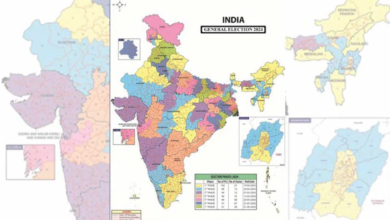LIC’s Bima Jyoti Plan: Invest Rs 10,000 to Rs 20,000 per year, receive up to Rs 1,08,000 annually in event of death

LIC’s BIMA JYOTI is a life insurance plan that provides a range of benefits to policyholders. The plan offers coverage for natural as well as accidental death, and also provides a fixed amount of money as a monthly income to the policyholder’s family in the event of the policyholder’s death.
The amount of money that a policyholder can expect to receive in return for their investment in the LIC’s BIMA JYOTI plan depends on a number of factors, such as the policyholder’s age, the amount of the premium, and the term of the policy.
The minimum amount that can be invested in the BIMA JYOTI plan is Rs. 10,000 per year, while the maximum amount will depend on the policyholder’s age and the term of the policy. For instance, a 40-year-old policyholder may be able to invest up to Rs. 20,000 per year for a term of 20 years.
As a general rule of thumb, the older the policyholder is, the lower the amount of the monthly income that they can expect to receive in the event of their death. For example, if a 30-year-old policyholder invests a premium of Rs. 10,000 per year for a term of 20 years, they can expect to receive a monthly income of Rs. 5,000 in the event of their death.
On the other hand, if a 40-year-old policyholder invests the same amount of money (Rs. 10,000 per year) for the same term (20 years), they can expect to receive a monthly income of Rs. 4,500 in the event of their death. This means that the policyholder’s family would receive a total of Rs. 1,08,000 per year for a period of 20 years.
Therefore, the amount of money that a policyholder can expect to receive in return for their investment in the BIMA JYOTI plan will depend on a number of factors, such as their age and the amount of the premium. However, as a general rule of thumb, a policyholder who invests a larger amount of money in the plan can expect to receive a higher return on their investment.
Benefits of the scheme:
One of the key benefits of the BIMA JYOTI plan is that it provides policyholders with financial security in the event of their death. This can be particularly important for individuals who are the sole breadwinners in their family, as it can help to ensure that their loved ones are taken care of financially even in their absence.
In addition to providing financial security, the BIMA JYOTI plan also offers policyholders a number of other benefits. For instance, the plan provides coverage for accidental death, which can be particularly useful for individuals who are engaged in high-risk activities or occupations.
Furthermore, the BIMA JYOTI plan also provides policyholders with the option to receive their monthly income through a variety of channels, such as a bank account or a post office account. This can make it easier for policyholders to access their money and use it to meet their financial needs.
Know how to apply for the BIMA JYOTI plan:
To apply for the LIC’s BIMA JYOTI plan, you will need to visit your nearest LIC branch and speak with a representative. You can find your nearest branch by visiting the LIC website and using the branch locator tool.
When you visit the branch, you will need to fill out an application form and provide the required documents, such as proof of identity and proof of address. You will also need to pay the premium for the plan and choose the term of the policy.
Once your application has been processed and accepted, you will receive a policy document that outlines the terms and conditions of your coverage, as well as the amount of the premium and the term of the policy.
It is important to carefully read and understand the terms and conditions of the policy before signing the application form and paying the premium. You can also speak with a representative at the branch for more information and to clarify any doubts or concerns you may have.







